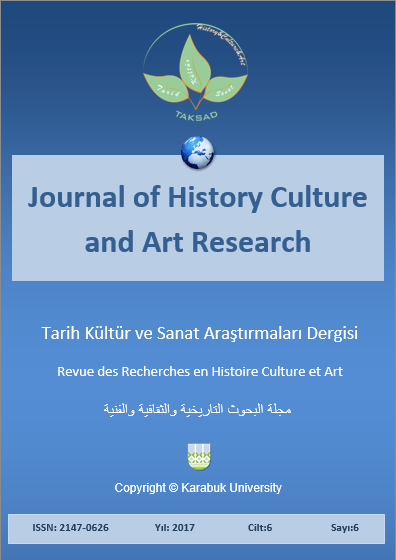Spiritual Art: A Study of Illuminated Drawings
DOI:
https://doi.org/10.7596/taksad.v6i6.1207Keywords:
Illumination drawings, Geometric drawings, Spiritual nature of motifs, Spirit of Islamic art.Abstract
Illumination can be seen as a collection of exquisite and novel designs that painters and illumination-workers use to make religious, scientific, cultural, historical, and other collections of work beautiful. The professionals of illumination use these techniques in books to beautifully virtualize the golden pages of the eternal literature and the religious texts of their homeland. In this way, the sides and margins of the pages are decorated with designs of Islimi (arabesque) branches, stems, flowers, and Cathay (Khataei) leaves. Illuminations like paintings have various schools and periods, such as the Seljuk, Bukhara, Timurid, Safavid, Qajar schools, with further branches within each school. The illuminations of different periods represent the states and spirits of those eras. However, the illustrated paintings have been performed in the primary state in each school and era with some minor differences in colors and designs, and it can be said that the basis of the illustrated designs are three geometric shapes of the square, circle and triangle, and the combination of these three shapes. In this article, we try to study illumination drawings in terms of the spiritual dimension and its effect on the soul and psych. Furthermore; we will study the spiritual nature of the motifs in order to achieve a deeper understanding of the spirit of Islamic art.
References
Al-Behnasi, A. (2006). Islamic Art. Translated by Mohammad Pour Aghasi. Tehran: Sura-i Mohr.
Ardalan, N. & Bakhtiar, L. (2001). A sense of unity. Translated by Hamid Shahrukh. Tehran: Beautification Organization of Tehran Municipality.
Bolkhari, H. (2007). The ruling of art and beauty. Tehran: Publication of Islamic Culture Office.
Burckhardt, T. (1991). The eternal values in Islamic art: the book of art and eternity. Edited by Seyyed Mohammad Avini. Tehran: Barg publication.
Chittick, W. (2007). An introduction to Mysticism. Translated by Mohammad Reza Rajabi. Qom: Center for Religious Studies.
Leveler, R. (1987). Sacred geometry, philosophy and practice. Translated by Hayedeh Mo'ayyeri. Tehran: Institute for Cultural Studies,
Nasr, S. H. (1998). The views of Islamic thinkers about nature. Tehran: Khwarazmi publication.
Nasr, S. H. & Rahmati, E. (2001). Knowledge and spirituality. Tehran: Suhrawardi.
Sajadi, S. J. (1982). Dictionary of rational sciences. Tehran: Iran’s Islamic Association of Wisdom and Philosophy.
Stari, J. (1993). An introduction to mystical cryptology. Tehran: Markaz Publication.
Tavassoli, M. (2004). The art of geometry. Tehran: Payam publication.
Downloads
Published
How to Cite
Issue
Section
License
All papers licensed under Creative Commons 4.0 CC-BY.- Share — copy and redistribute the material in any medium or format
- Adapt — remix, transform, and build upon the material for any purpose, even commercially.
Under the following terms:
Attribution — You must give appropriate credit, provide a link to the license, and indicate if changes were made. You may do so in any reasonable manner, but not in any way that suggests the licensor endorses you or your use.
- No additional restrictions — You may not apply legal terms or technological measures that legally restrict others from doing anything the license permits.







